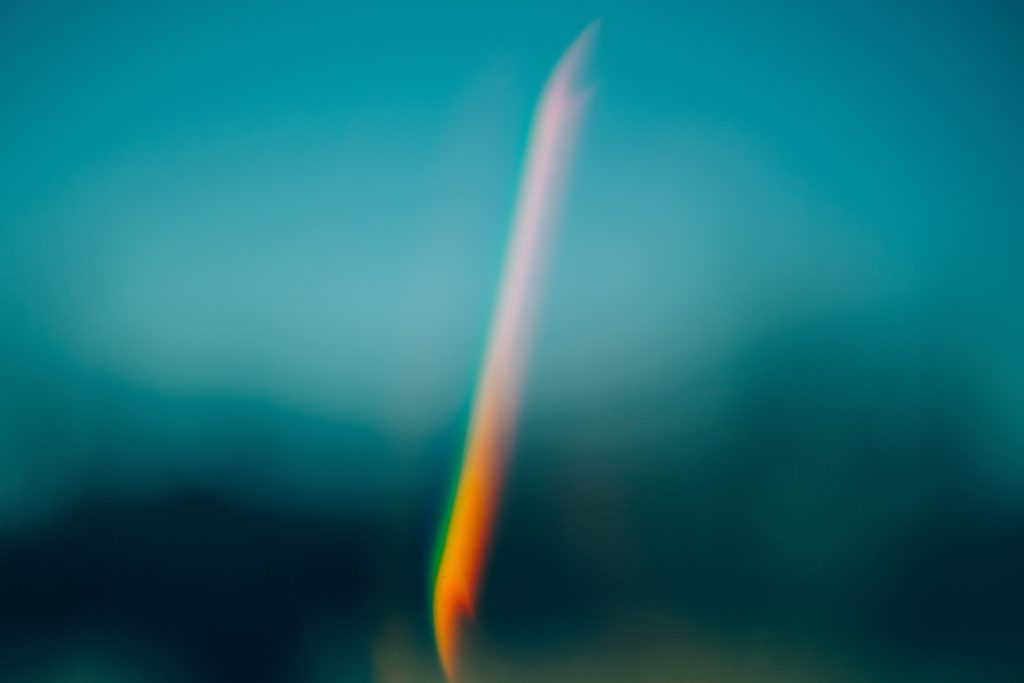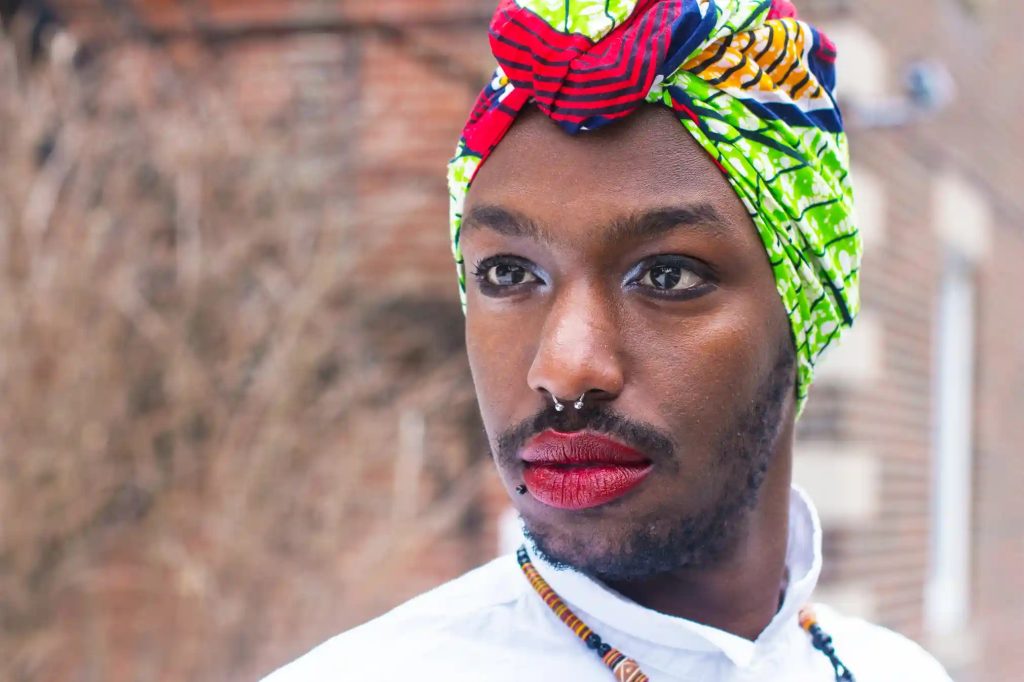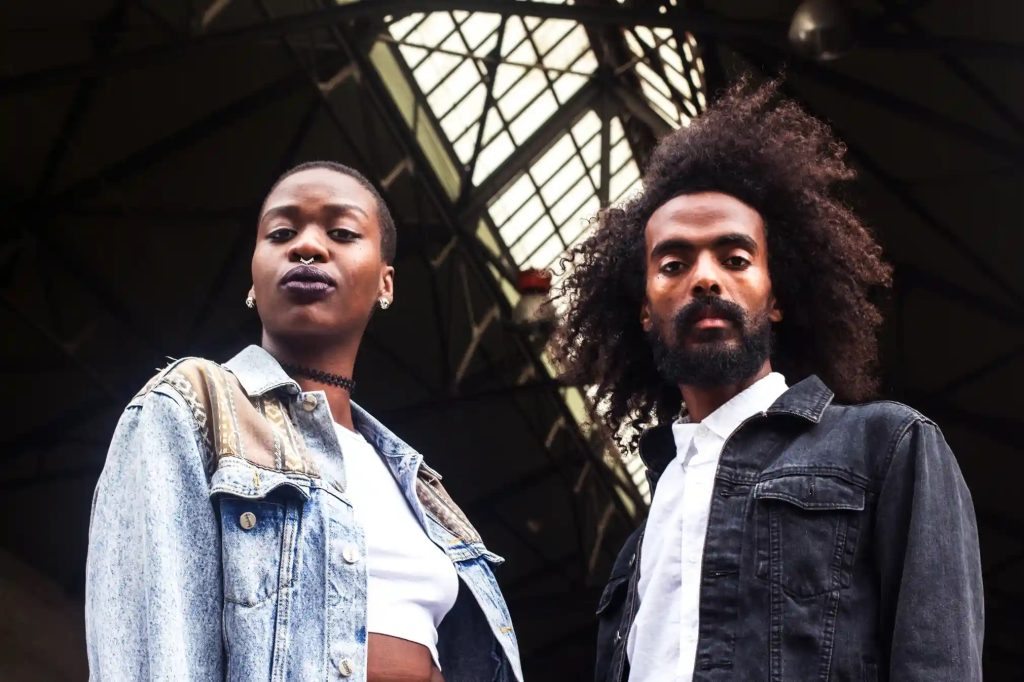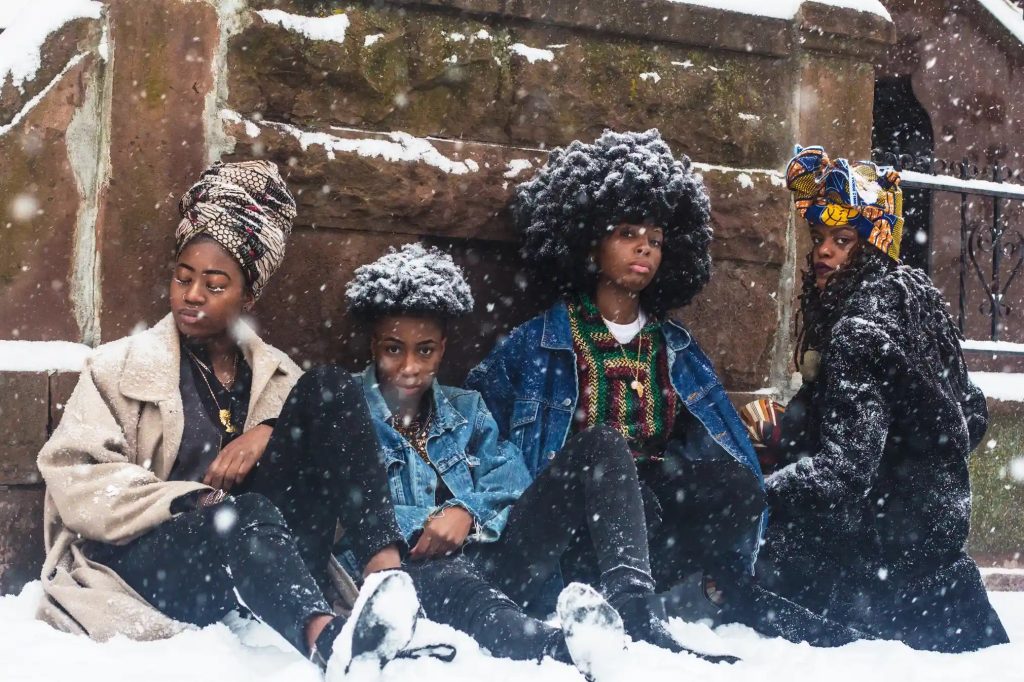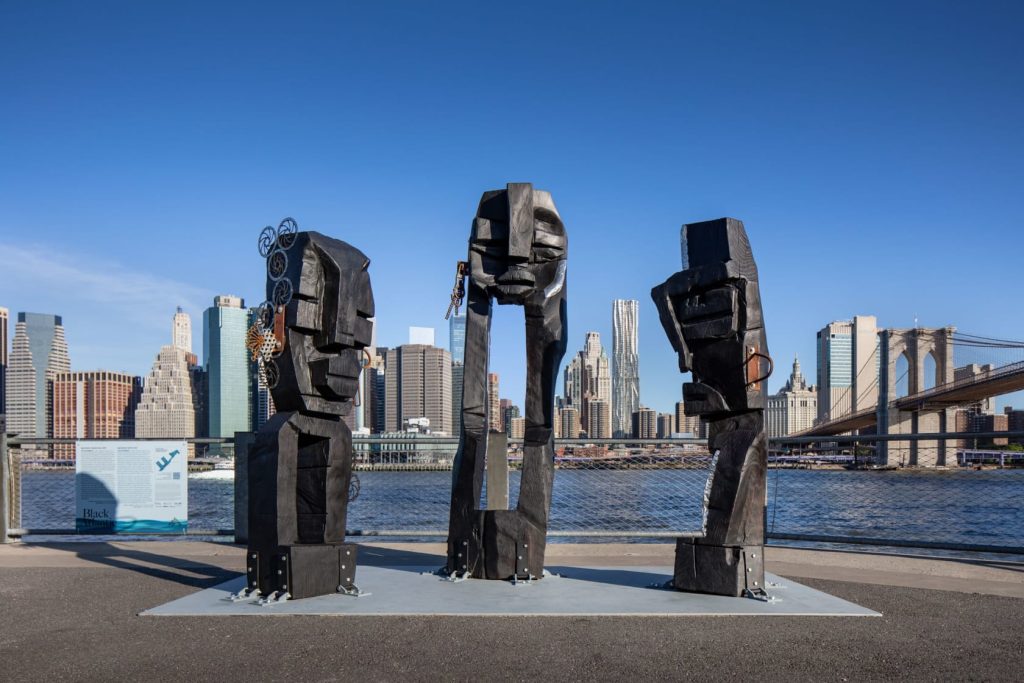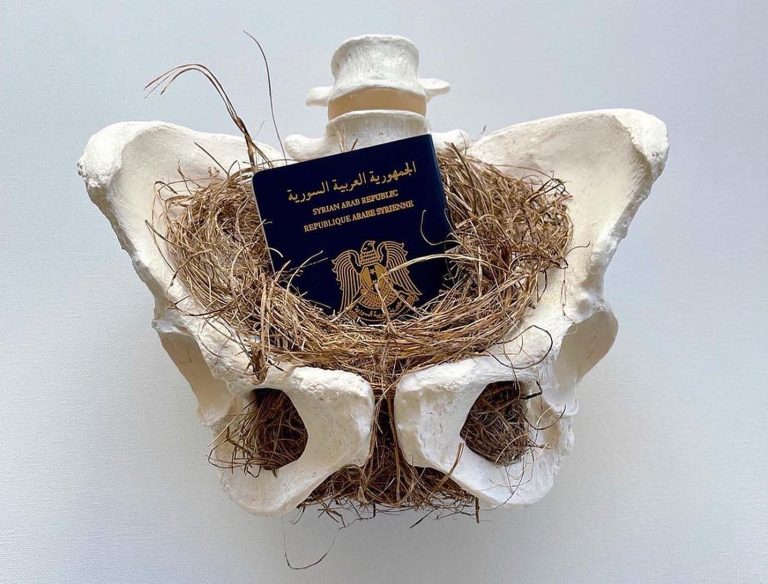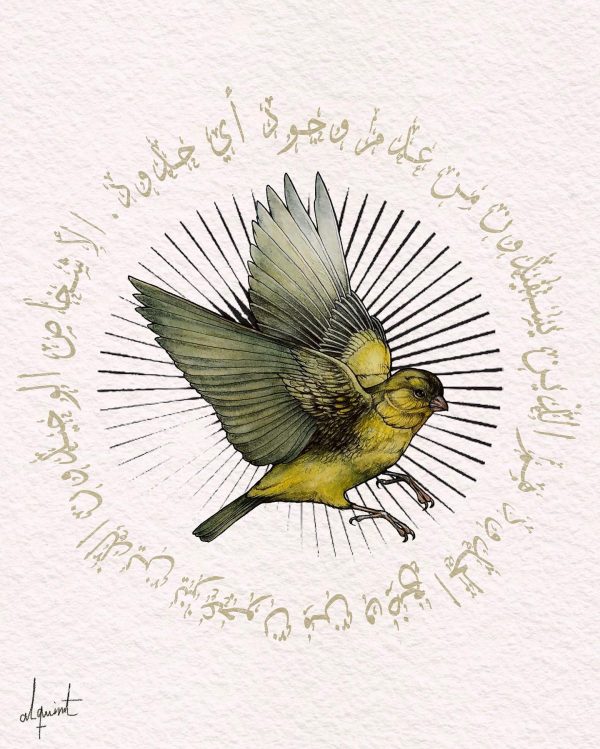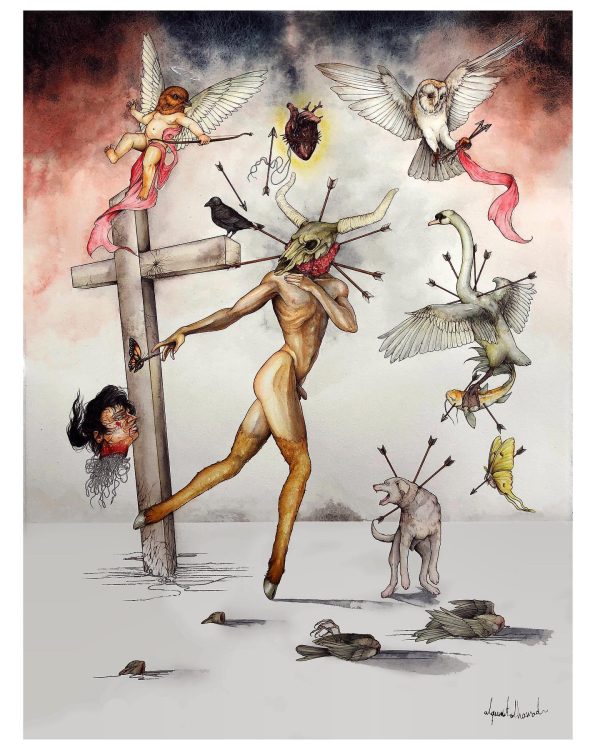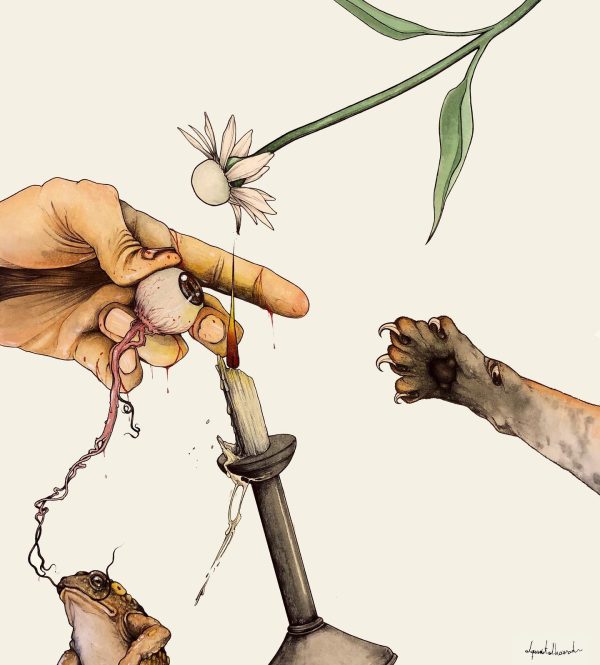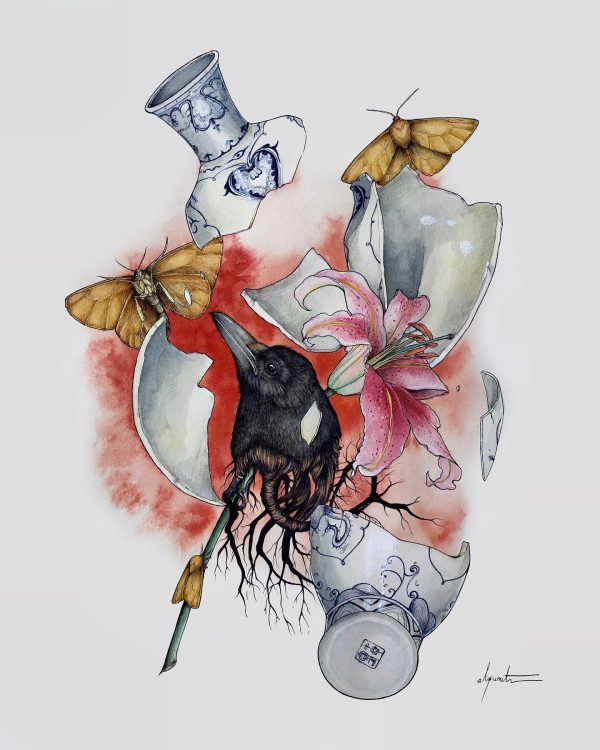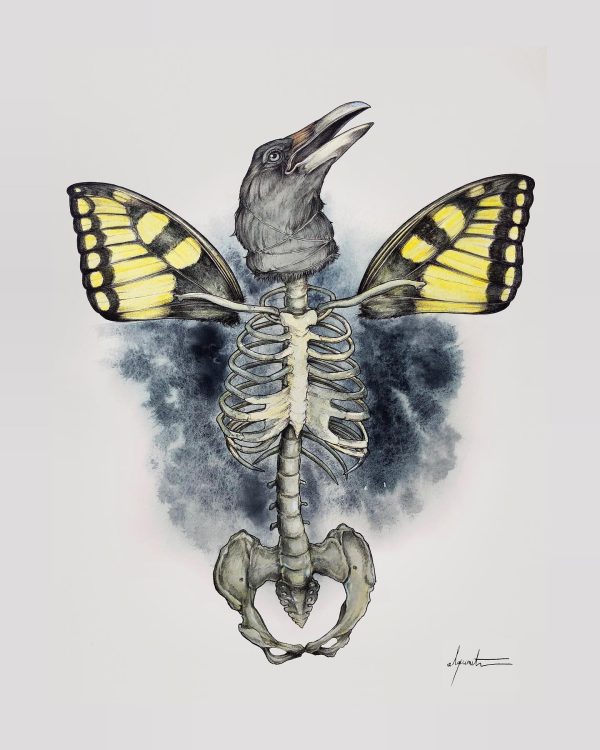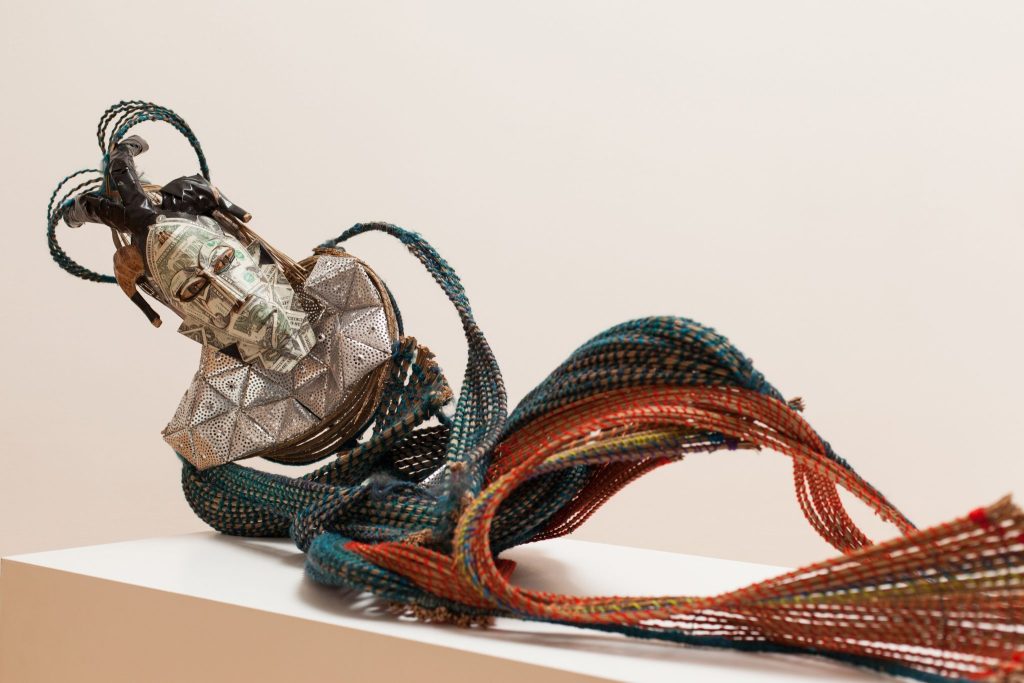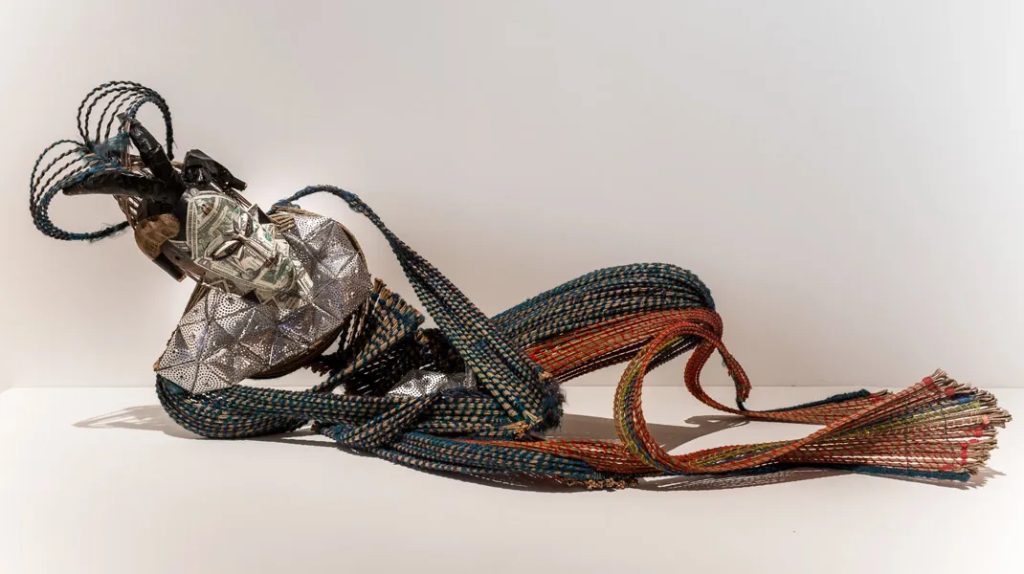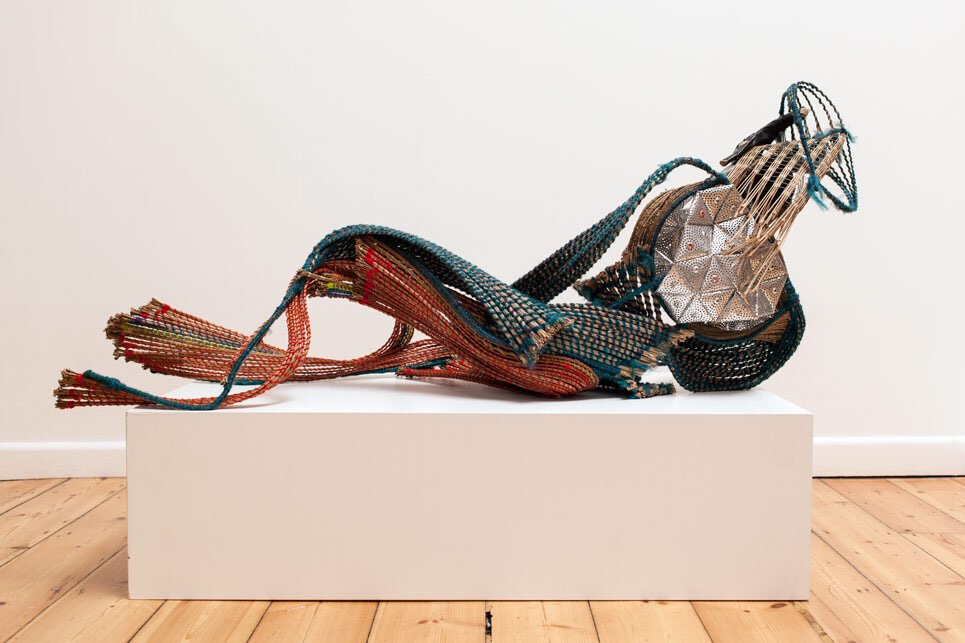Queerful: Art as Resistance
curated by Carolina Veloso
A showcase of visual art celebrating queer art and artists. Their work explores all sorts of themes from equality, mental health, queerness, colonisation, identity, among others. We invite you to reflect on these powerful and moving artworks and take a moment to support and celebrate queer people and queer people on the move.
Mikael Owunna
Limitless Africans, a docseries by photographer Mikael Owunna, places at the center of his lenses LGBTQ African immigrants, refugees and asylum seekers, showing that existing is resistance and celebrating African queerness. The portraits are created in a way that connects the viewer and the portrayed, finding peace, strength and beauty in this interchange. A body of work that challenges stereotypes and celebrates queer people.
This body of work [Limitless Africans] is a collaborative response between me and my community, to re-define what it means to be an immigrant, African and queer in North America and Europe at this time. To confront, with our self-love and stories, the oppressive narratives that say we should not exist. We are Limitless.
Leilah Babirye
Through the act of burning, nailing and assembling, I aim to address the realities of being gay in the context of Uganda and Africa in general. Recently, my working process has been fuelled by a need to find a language to respond to the recent passing of the anti-homosexuality bill in Uganda.
Babirye grew up and studied in Uganda. Her first artwork (in university) would start incorporate metaphors of prisons and other concepts, trying to raise awareness of the “Kill the gays” bill of 2009 through art. By studying Uganda’s history she started to find queer people all over it, understanding that queer people have always been a part of Uganda. ‘Ebisyaba’ is a pejorative luganda word for gay people, that means surgarcane husk, the part of the sugarcane you throw out – “It means rubbish, trash”, says Babirye. In (successful) attempt to reinterpret and transform this word and meaning, sculptor Leilah Babirye transforms trash into beauty. Intentionally using discarded material, Babirye gives them a new life and a new light, showing the world and Uganda that queer people are beautiful and deserve the freedom to exist (in safety).
Alqumit Alhamad
A three months in the work and countless hours of perfecting every detail and sculpting the pelvic bone and knitting each grass straw of the bird nest to be an exact representation of my previous artwork.
This sculpture [“Not coming back to home’s lap”] is a true manifestation of my conflicting mentality of being in diaspora.
— Alqumit Alhamad
MY WORK ALSO RELATES TO HOW QUEER BODIES IN THE ARAB WORLD AND SYRIA ARE STILL HEAVILY REGULATED AND DISCIPLINED, SO SURVIVAL IS NOT ONLY A METAPHOR FOR ARTISTIC CREATION, BUT ALSO AN ISSUE RELATING TO DAILY LIFE.
– ALQUMIT ALHAMAD
Through metaphors of natural elements, Alhamad creates with his painting and artworks a place of discussion about themes like equality, sexuality and mental health, many of them taboo in his origin country, Syria. He welcomes his freedom with the responsibility of transmitting through his works the themes he always craved to speak out loud. His art is elegant and powerful, it moves in so many ways, mixing everyday life nature with such creativity and power.
Adejoke Aderonke Tugbiyele
Homeless Hungry Homo comments on how gay Africans are . . . oftentimes more likely to end up in poverty because of the dual criminalization and demonization of same-sex love, by the government and the church respectively. It also comments on the fear of poverty as a result of coming out, and the notion that people will choose to remain “masked” and in the closet for that reason.
— Adejoke Tugbiyele
2014 was the year in which the SSMPA, the Same-Sex Marriage Prohibition Act, was introduced. It was also the year that Adejoke Tugbiyele created “Homeless Hungry Homo”. Coincidence? No. The way Tugbiyele depicts this masked and lying-down individual is incredible powerful and humanising. The details surrounding this piece make us dive into its many complexities. From afar the vulnerable position and bright colours (from the pride flag) stand out. Closer, we begin to notice more nuances features like the mask made from US dollar-bills and the use of double-helix. This last feature, the double-helix, is quite common in Tugbiyele’s work as she explores the duality between visibility/invisibility, and through this concept also “explores multiple dualities including transparent/opaque, industrial/natural, masculinity/femininity and, spirituality/sexuality, all of which one might similarly find within Eastern philosophy and other indigenous cultures”.
Akwaeke Emezi
“7 books in 4 years”, corrects Akwaeke Emezi in an interview with Trevor Noah. Emezi’s passion puts everyone at awe as their books pill up in our bedside table, but even more extraordinary is the complexity of their artist outlets. They have dived into YA, memoir, poetry, novel and more recently music. Their work has become recognised world-wide with The Death of Vivek Oji as New York Times Best Seller.

Emezi’s practice is deeply rooted in the metaphysics of Black spirit and employs the lens of indigenous Black ontologies to examine embodiment, ritual, and rememory.
Emezi’s works speaks to a lot of people as it approaches life from many directions. Lenses that are not usually represented or talked about. It does so with the outmost normalcy of life. Their every changing wonderful work will keep us following them throughout their career as fortunate spectators, bearing witness to their endless search for meaning, connection and hope, through their many forms of art.
“Life In Exile” is about Y., a man who tried to live his live feeling and finding love, most like everyone else. For Y., it was not as easy as one might think, as he loved a man in Sierra Leone. A man loving a man is a dangerous thing in Sierra Leone, a country that does not respect diversity and criminalizes queer love. Once people discovered this truth about him, he had no other option than to run away, leaving his life, home and boyfriend behind.
At the time “Life In Exile” was created, Y. had been living for the last two years in Greece in degrading conditions. The art piece tells a story through colours and textures, as it explores the complex feeling of Y., through his sadness and happiness, his fears and courage. It ultimately show (through the changes of colours) how life can sometimes take a turn.
“I was inspired by the strength and persistence of Y. and I wanted to create a piece around that.“
— MJ Jardim
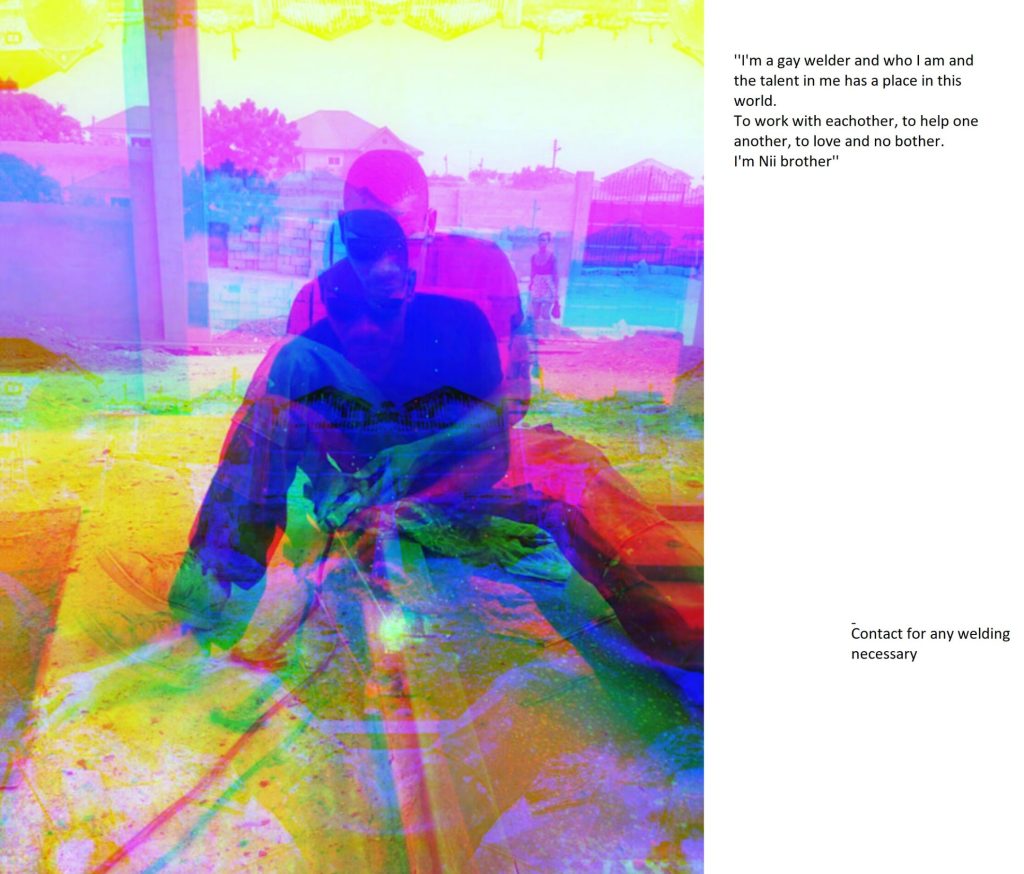
I saw someone who has a passion for welding, a helpful craft, an art, a job that for him is much more than a job and after stopping that practice in his live he misses it and feels sadness. He is happy being a welder, being respected for his work, being able to do what he likes. [This is] a photo of a happy person from Ghana, working in the country where he was born, and in which is now persecuted and in danger due to the government politics and violent cultural ignorance against his sexual orientation.
— Emmanuel Mejía
If there is any queer artist or art on the move that you find particularly powerful, important and breathtaking, please do not hesitate in sharing with us in the comments bellow.
References
- https://www.mikaelowunna.com/
- https://www.stephenfriedman.com/artists/66-leilah-babirye/
- https://www.youtube.com/watch?v=UJrrQXskprM&ab_channel=OurChoicesArt
- https://www.instagram.com/alqumit_art/
- https://www.facebook.com/alqumit
- https://queerasia.com/qa18art-blog-alhamad/
- https://www.youtube.com/watch?v=4wY81_RzLp0&t=613s&ab_channel=TEDxTalks
- https://www.adejoketugbiyelestudio.com/
- https://academiccommons.columbia.edu/doi/10.7916/t5qq-t519
- https://www.brooklynmuseum.org/opencollection/objects/218606
- https://sculpturemagazine.art/beyond-physicality-a-conversation-with-adejoke-tugbiyele/
- https://www.youtube.com/@akwaeke
